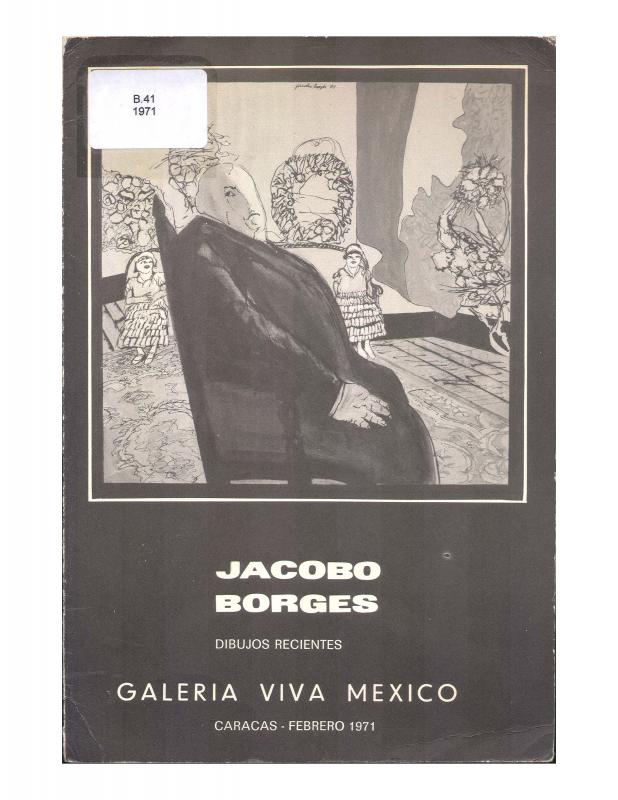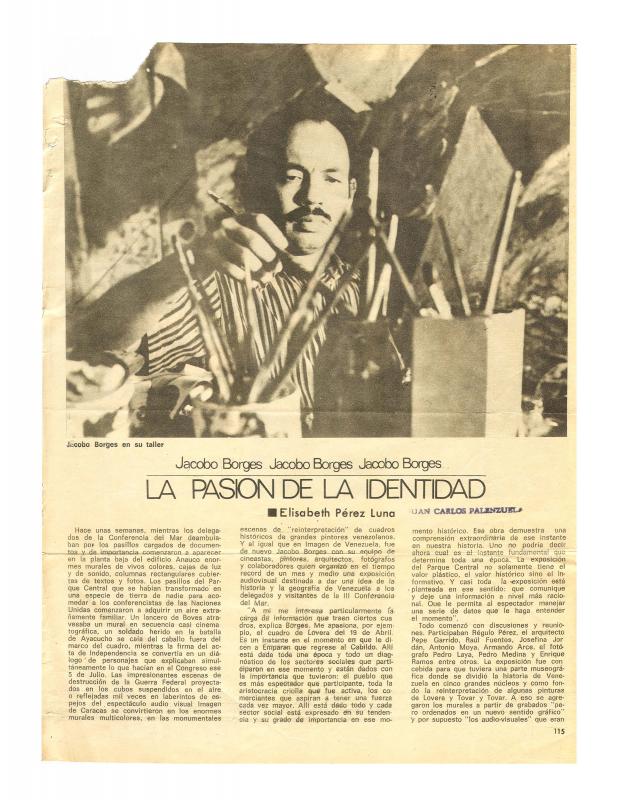The Venezuelan painter Jacobo Borges (b. 1931) was interviewed in New York on the occasion of the opening of the Jacobo Borges exhibition at the CDS Gallery (directed by Clara Diament Sujo), in 1983. The interview touched on two basic themes that Borges addresses in his work, each of them significant in its own way. One of them was politics, used as a frame of reference, and the other was a specifically Latin American style of painting, as represented in Borges’s work. The painter eloquently discusses the politics of two different areas: the politics of visual art, and the politics that we experience in our real, daily lives. Traditionally, in Venezuela, these two were closely related to each other during the social realist period and through the late 1960s. Politically committed painters on the left of the political spectrum tended to express their leftist ideology without much subtlety in their art, as a sort of manifesto. Borges and the Nueva Figuración broke away from this style and, though actively left-wing, rejected dogmatic ideological ideas that, in painting, limited their expressive resources and artistic freedom. Borges’ work—even the powerfully political paintings he produced in the 1960s—had been justly praised for the artistic and symbolic quality of his ideas that were a long way from pamphleteering and obvious statements. This interview clarifies Borges’ attitude and approach, although in real life he expresses his preference for the left-wing candidate, Teodoro Petkoff, the representative for the Movimiento al Socialismo (MAS) in the next elections.
As regards the second subject that was discussed in the interview, it is odd that—despite the fact that the critics identified him as a representative of Latin American painting and, in a way, he admitted as much in this interview—Borges denies the existence of a Latin American style of painting as such. There is not, in fact, a significant group of painters who produce similar work (as happens in literature), and they tend to be more focused on contemporary mankind in a more global sense.
For more on the subject of the work of Jacobo Borges, see the article by Donald Kuspit “Jacobo Borges’s creation of potential space / Jacobo Borges e la creazione dello spazio potenziale” [doc. no. 1060608]; the article by Perán Erminy “Una exposición de obras de Jacobo Borges” [doc. no. 1060424]; the newspaper review by Elizabeth Pérez Luna “Jacobo Borges: La pasión de la identidad” [doc. no. 1063714]; the article by the critic Inocente Palacios “Jacobo Borges” [doc. no. 1060361]; the essay by the historian Berta Taracena “Jacobo Borges en México” [doc. no. 1063795]; the article by the critic Roberto Guevara “(Sin título) [Un día el poeta sentó la belleza en sus rodillas… ]” [doc. no. 1060477]; Lenelina Delgado’s interview [doc. no. 1063831]; and José Luis Colin’s interview “Entre la acción colectiva y la búsqueda individual: Jacobo Borges” [doc. no. 1063769].








